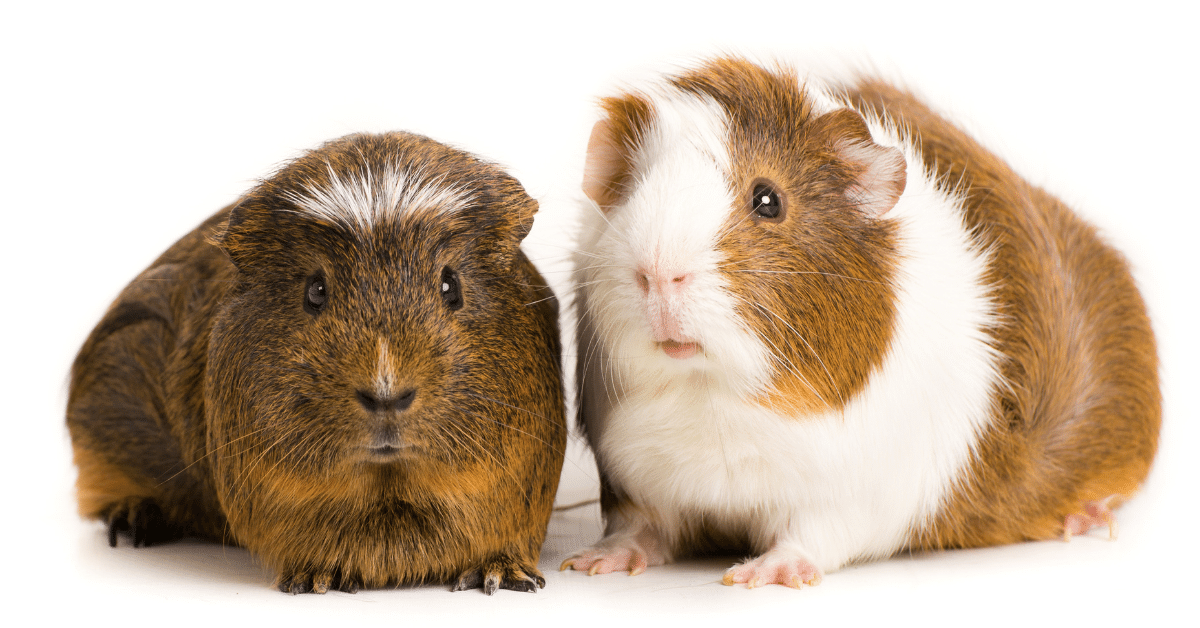Essential Guide to Guinea Pig Dental Care
Guinea pigs have teeth that grow continuously, and their dental needs are very different from the dental needs of a dog or cat.
However, dental health is still a vital part of a guinea pig’s wellbeing. Here are some important things to know…
Which Dental Problems Do Guinea Pigs Develop?
Congenital malocclusions are possible in guinea pigs, although much less common than in rabbits since guinea pigs have not been bred with dwarf or shortened snout variations.
Acquired dental disease accounts for the majority of dental issues in guinea pigs—with dietary factors being a primary cause, due to uneven or inadequate wearing down of the teeth.
A common problem is an inadequate fiber in the diet, which is normally provided via hay. A vitamin C deficiency can also lead to dental issues since it affects the integrity of the connective tissues that hold the teeth in place—leading to loose and misaligned teeth and subsequent tooth overgrowth.
Any other local or systemic issues (trauma to the jaws or teeth, systemic disease, neoplasia, etc.) that affect a guinea pig’s eating habits could also lead to dental problems.
The uneven or inadequate wearing of the teeth can cause malocclusions, elongated crowns, and sharp edges that can injure or ulcerate the buccal mucosa and cause pain. Overgrowth on the lingual aspect may entrap or irritate the tongue. All of this can make it difficult or impossible for a guinea pig to eat.
Abscesses or infections may also occur, although this is much less common than in rabbits.
Normal Guinea Pig Dentition
In order to recognize what is abnormal in this species, it’s important to know what’s normal for them.
Guinea pigs have open-rooted teeth that continuously grow, and they wear down their teeth by chewing on fibrous foods.
Their dentition is the same in all four quadrants: one incisor, followed by one premolar and three molars. Guinea pigs do not have canine teeth, but instead have a space called the diastema between the incisors and the premolars.
The premolars and molars are anatomically identical and collectively known as the cheek teeth.
Since the mandible is wider than the maxilla, the cheek teeth curve (the mandibular teeth inward and the maxillary teeth outward) to occlude with one another on a sloped plane.
Signs of Dental Disease in a Guinea Pig
Since guinea pigs are prey species, they try to hide signs of a problem for as long as possible. But a pet owner may pick up on changes in eating habits, which develop even in the early stages of malocclusions.
Anorexia is a common symptom of dental problems.
Other symptoms may include weight loss, changes in fecal output (quantity and appearance), dropping food, changes to grooming habits (and subsequent skin issues), salivation, and GI stasis. Facial swellings are possible but less common.
Diagnosing Dental Disease in Guinea Pigs
General anesthesia is best for a thorough dental evaluation.
Cheek teeth abnormalities are very common, more so than incisor malocclusions. So, if an incisor malocclusion is present, it’s a good indicator that a closer look at the cheek teeth is necessary.
A visual examination with a good light source and an otoscopic cone or speculum may reveal a dental issue. However, small or subtle lesions can be missed this way.
Use of an endoscope is very helpful for diagnosing dental problems in guinea pigs, with the added bonus of clear images to show clients so they truly understand the issue.
Radiographs are also important for diagnosing dental issues. And if available, CT is an excellent tool for obtaining diagnostic information.
Treating Dental Disease in Guinea Pigs
Supportive therapy is usually needed, since dental problems impact a guinea pig’s ability to eat, and pets may present in poor condition with weight loss and anorexia. Supportive care commonly includes fluid support, dietary support with a critical care formula, and pain relief.
All of this can help stabilize the patient for anesthesia, prevent complications such as GI stasis, and promote a better recovery and return to normal eating habits.
The main goal of dental treatment is to restore the normal length and shape of the teeth as much as possible and to promote normal occlusion in the process.
A high-speed dental drill is generally used while cutting tools are not recommended because they can cause fractures in the teeth. If needed, extractions of diseased teeth or surgical removal of abscesses can be performed, along with appropriate antibiotic therapy.
Prognosis varies, based on the severity of the disease. Severely overgrown teeth may require multiple treatments are done 1-2 months apart, or even chronic palliative treatments.
To perform safe and effective dental procedures for guinea pigs, it’s important for a veterinarian to gain training and experience, and to have the right tools. Referral to a specialist is a good option, too.
Prevention Is the Best Medicine
Since most dental problems in guinea pigs are related to diet, client education can go a long way toward preventing dental issues in guinea pigs.
Providing instruction on a guinea pig’s dietary requirements is a great step at a new pet visit. Additionally, owners should know to look for anorexia or changes in their pet’s eating habits and to report concerns to their vet right away.
Quick recognition of a problem could help to catch the issue early, resulting in more timely and effective treatment
Written by: Dr. Tammy Powell, DVM



